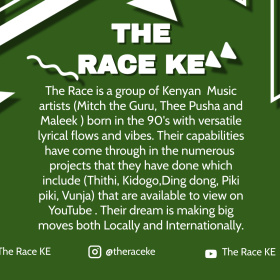Salegy in Madagascar
By Arnaud Ratafika
A true musical heritage, salegy features among the rhythms, music andpopular traditional dances of the Madagascan people since the mid-20th century. Performed in a ternary and fierce 6/8 rhythm, salegyhas a bright future today due to the prominent place it occupies in traditional festivals and in the music industry of Madagascar. This text provides an overview of the genre.
 Eusèbe Jaojoby, the king of salegy. Photo : The Orbit
Eusèbe Jaojoby, the king of salegy. Photo : The Orbit
Origins
The birth of salegy dates back to the 15th century, at the time of the first settlement in Madagascar. Originally the music was entirely linked to Madagascan customs. The Tsimihety and Sakalava (northern region) ethnic groups used salegy for rites of possession and ceremonies related to ancestor worship such as joro (a local sacrifice) to seek favours from God and ancestors.
“If salegy is based on the antsa or a cappella, instruments now accompany it,” says Charles MaurinPoty, a local songwriter. Salegy was then played with flutes, a diatonic accordion and valiha(tube zither).
The word ‘salegy’dates back to the 1960s. It denotes a new, electricmusic conceived by some guitarists, rendered as a fusion of variety and tradition. Salegy thus appeared as the first national urban music in Madagascar.Itis played at different speeds, according to the various musical traditions of the regions. While salegyis typically slower in the highlands, in coastal areas the tempois more accelerated.
Pioneer artists
In the 1960s, salegy triggered a musical revolution with the arrival of electric instruments. Elisabeth Raliza and the folk association of the east coast launched the modern salegy sound with the hit ‘Viavy Rose’. One sees the emergence of salegy integrating electric instruments and chromatic accordion while mixing local (basesa, tsapiky, sega) and imported (sega from Mauritiussega and Reunion, Congolese rumba, South African mbaqanga and benga from Kenya) styles. This merger soon enjoyed considerable success.
Salegy was then popularized by the late Freddy Ranarison and Los Matadores, an orchestra from the town of Diego-Suarez (now known as Antsiranana). “A pioneer of the electric guitar in the 1960s, Freddy Ranarison propelled salegy to international success. The rhythm was not slow to be adopted in Africa,”says Serge Henri Rodin, a local researcher and teacher.
One of the veterans of this famous genre remains Eusèbe Jaojoby, considered the king of salegy. Jaojoby was a member of a series of bands that performed salegy from 1972, namely Los Matadores, Valoalo of Tamatave and Vikings of Nosy Be. “I was one of the first to sing salegy, which was previously limited to a few instrumental recordings,” says Jaojoby. Two 45rpm EPs were released. The group Jaojoby continued to get the people of Antananarivo, the capital, on the dancefloor in the 1970s and gained international recognition in the 1990s. Today Jaojoby owns and manages Jao’s Pub, one of the leading venues for salegy. Since the forming of Jaojoby and similar acts such as Tianjama and Dr. JB, salegy has become the iconic music of the Big Island.
The new generation
After the success of the pioneer artists, Rotsaka Din launched a new trend in salgey in the 2000s. “If previously melody was most emphasized, today rhythmic speed is explored. Salegy has become more energetic,”says Nelson Rafandroana, a local producer. Since 2004, national stars like Wawa, Vaiavy Chila, Fandrama, Tence Mena and Ali Murad have risen and remain on the scene until today. These artists contribute to the evolution of salegy in Madagascar.
While keeping to its original tempo of 6/8, modern salegy has evolved with current musical trends. Artists like Tence Mena and Vaiavy Chilla dare to perform salegy combined with contemporary high-tech sounds of Africa, such as the coupé-decalé of Ivory Coast and ndombolo of the DR Congo. As for Ali Murad and Wawa, they prefer to reduce the guitar sound and increase the tempo to get a more catchy sound for the youth.
Many artists from Diego-Suarez (Antsiranana) -such as Gino, Zandry Amed, Sofia Gouma, Flavienand others - are popular in their city, but remain relatively unknown on the rest of the island. “Today we are witnessing the emergence of a whole new generation of artists who should gain popularity as a result of their creativity,” says songwriter Charles Maurin Poty. These young artists such from Diego-Suarez, among others, launched a sound they call ‘salegy gouma’: a quick and exciting rhythm that offers great interaction with the audience. For her part, Stella Affro is trying out another new form, ‘salegy rock’.
Exporting salegy
Salegy is sung and played in concerts, bars, cabarets and party evenings throughout the Big Island; and in some countries outside Madagascar. “Jaojoby is undoubtedly the leading ambassador of salegy music on the international stage even till today,” says Prisca Rananjarison, a cultural journalist. Hisgroup’s international toursinclude New Year’s Eve in 1990 with the Madagascan diaspora in Paris. Since then the group has participated in many festivals on all five continents,including in Canada, the USA, Europe, Africa, Asia and Oceania. “With salegy’s ecstatic furious tempo and varied rhythms, our music was appreciated wherever we performed,”says Jaojoby. On the production side, Jaojoby counts seven international albums to his credit.
As for artists of the new generation, they try to distinguish themselves through performances abroad. Today, singer Wawa is known throughout the Indian Ocean. “Our aim is to showcase modern salegy on the international stage,”says Wawa. Another popular artist, Tence Mena, has participated in regionalevents such as FestivalInter Mizik (FIM) in Mayotte in 2011, ZIN’CK Festivalin Anjouan in 2012, the Crowzes des Suds Festival of Reunion in 2014 and a string of tours in France that same year. Furthermore, top salegy artists perform and broadcast their music abroad, like Roseliane and Eusebia, the daughters of Jaojoby.
Promotion
Salegy holds an important place in the music industry of Madagascar. According to SoiliBoiareAboud, head of Super Music, one of the few stores selling albums from the island, “Here at Super Music, one can say that albums of the artists in vogue such as Wawa and Tence Mena have the most success.”
Salegy artists are constantly looking for fame and exposure. “Given the expectations of their fans, popular artists need to select an excerpt from their album to be featured on television and radio,”says producer Nelson Rafandroana. To support this struggle, they also broadcast their music on the internet via YouTube. However, given the scourge of piracy, album sales are not very profitable to artists in Madagascar. “We can say that artists earn more by embarking on national and international tours,” adds Rafandroana.“If we take for instance the example of Wawa, he is on tour from March to December, working 20 days out of 30”. In this way, Madagascan artists continue to work hard to proudly fly the colours of salegy throughout the world.
Further reading (in French): Au cœur du Salegy, la musique dominante à Madagascar’ - http://fr.globalvoicesonline.org Le salegy de Madagascar’- http://voyage.e-monsite.com Le Salegy Une Musique Traditionnelle De Madagascar’ -http://lamusiquemalgache.blogspot.com Freddy Ranarison - http://www.afrisson.com/Freddy-Ranarison-400.html Jaojoby Eusèbe : le roi du Salegy à Madagascar’ - www.musique-madagascar.com Le salegymondialisé de Jaojoby’ - www.rfimusique.com Tournée Jaojoby : Plus qu’unroi du salegy, un ambassadeur de la musiquemalgache’ - www.midi-madagasikara.mg Le roi du salegy règne sur les savanes africaines’ - www.lexpressmada.com fiche artiste Jaojoby - www.craam.mg/cms/artiste/musique/69 Portrait : Wawa, « toujours en marche pourporter le « salegy » à l’échelleinternational’ - www.midi-madagasikara.mg Biographie de Tence Mena -www.tencemena.com





















Comments
Log in or register to post comments